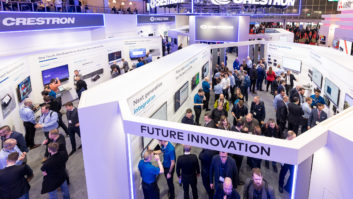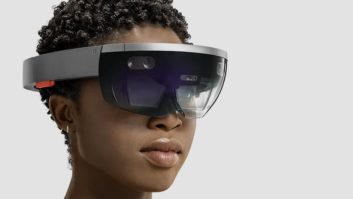The European custom installation market provides significant opportunities for US manufacturers, but only if they provide truly European solutions, tailored to individual national markets, says David Rodarte, president and chief operating officer at NuVo Technologies.
In the past decade, it would be fair to say that US-based AV equipment manufacturers have had to deal with something of a growing image problem when dealing with export territories in Europe.
In my view, the key to European success lies in putting the required time and effort into aligning US businesses like ours closely with regional needs. Such an approach will build stronger bridges between our two continents and create the right platform for business success.
After all, everybody agrees that there is huge potential for growth in residential custom installation across Europe.
The UK is the biggest and most well-developed market in this region. Yet with relatively low penetration for whole home audio and other technologies in mid and upper mid-market properties, it still offers significant opportunities for further expansion.
Beyond the UK, the market is even more exciting. The two powerhouse economies in Germany and France remain relatively untapped in terms of custom installation sales; as do markets in Italy, Spain, Benelux and elsewhere in Western Europe. Even greater opportunity is provided by the emerging economies especially in Russia and Eastern European states, such as Poland, the Czech Republic and Slovakia and recent sales trends show surprising growth in these markets.
By simply responding to local install form factors, providing consumer displays in local language, and relying on country specific distribution, US-based manufacturers can work together with their European partners to capitalise on these incredible opportunities.
Thatís why in recent years weíve introduced country specific touch panels and language support for our Grand Concerto and Essentia audio systems in Spanish, French, German, and Russian, as well as English. We also plan for future release of additional European language support.
Alongside this, weíve developed products aimed primarily at EMEA customers, such as our DAB/FM dual tuner. According to the latest report from the UKís Digital Radio Working Group, more than 30% of all adults listen to the radio on digital platforms with current trends suggesting this will continue to rise. Germany and France have plans to launch DAB+ and DMB audio services across their respective countries in 2009, with other countries looking to follow suit in the near future.
Meanwhile, our Essentia E6G system is the first whole-home audio system to earn the coveted Energy Star logo ñ consuming less than one watt of power while in standby mode. As regulations across Europe tighten up on power consumption, and consumers consciously seek to purchase low-energy products, so such a capability to offer reliable, energy efficient appliances will be increasingly in demand.
Because of the prevalence of solid brick and concrete walls in much of its existing housing stock, Europe also offers a different challenge for system installers. The job of ëpulling wiresí becomes a much more difficult, labour intensive and expensive exercise than it typically is for their US counterparts.
In this context, innovative wireless devices can open up new possibilities and applications for installers, and enable whole home audio systems to become even more integral and enjoyable to the everyday lifestyles of homeowners.
On this front, we offer the Wireless Control Pad (WCP), allowing users to control our Grand Concerto and Essentia E6G whole-home audio systems, as well as the sources attached to them, such as satellite and terrestrial radio tuners, music servers, PCs and iPods.
A user can take the WCP anywhere in the home where in-wall control pads arenít conveniently accessible, and easily select music or sources on the NuVo system. The WCP also receives metadata and operational feedback from the sources connected to the NuVo system.
Such products provide a sensible alternative for rooms where it is impractical or impossible to install in-wall controllers, where concrete or brick walls exist, for example, in heritage or listed buildings, or where barriers make it difficult to string wire between the room in question and the source equipment. They are also a great solution for those homeowners who, for cosmetic reasons, may not wish to have in-wall control pads in every room. Because they donít require cutting into a wall and pulling wire like an in-wall controller would, they are a great option for installers seeking to retrofit a new whole-home audio system into an existing home.
We see this retrofit market as a great growth opportunity for European dealers. To help grow business in this sector there are some really exciting new technologies and products on the horizon.
While the x10 systems of the past struggled with reliability and limited bandwidth, todayís PowerLine Carrier technology offers one of the best solutions for audio in existing homes as a solid and dependable platform for communication. This solution navigates around interference through the use of algorithms to compress and packetize the data, then move it through multiple subcarriers along a much higher frequency for minimal disturbance, before restoring and synchronizing the transmission where it is desired. The end result is the ability to deliver sound and allow for command and control, all across a homeís existing wire, with reliability and audio quality like never before.
Since power is required anyway, the AC main becomes a convenient place to send audio and control data. The operating environment is also potentially easier to deal with than 801.11 wireless, especially when a dozen or more networks are located in the same space. Secondly, PLC signals are not blocked by concrete walls or floors, or attenuated by steel framework construction. Thirdly, installation is quick, simple and cost-effective with no requirement for an Ethernet network and, last but by no means least, since each room or zone is synchronised, no echoes will be heard in acoustically coupled spaces.
The HomePlug Powerline Alliance (www.homeplug.org), whose sponsors include Cisco, GE, Intel, Motorola, Texas Instruments and others are seeking to extend the current Homeplug standard using AC mains wiring for high-speed data transmission worldwide. Among the companies with HomePlug products in production are organisations such as, Belkin and NETGEAR (USA), Develo (Germany), Solwise (UK) and LEA (France), and to date, over 25 million HomePlug products have been shipped.
HomePlug technology is rapidly increasing in bandwidth, costs are decreasing, and partnerships with complementary technologies are in development. Currently, the HomePlug AV standard supports 200MHz, and HomePlug AV2 (now in development) will support 600MHz. Soon, HomePlug devices from different companies will talk to each other, and last year, HomePlug announced a liaison partnership with ZigBee Alliance.
HomePlug is robust technology supported by a worldwide list of reputable companies. Both our company, NuVo, and Russound recently announced multi-room audio products based on HomePlug, and several traditional AV companies, such as, Pioneer and Sharp are active HomePlug members.
The ability to run audio and data over existing electrical infrastructure within the home makes perfect sense for dealers seeking to grow business in Europe. It will bring into play a huge number of existing properties where custom installation of any kind had previously been thought too difficult, too time-consuming or, plain and simple, just too much. Using less wiring in the home and doing more with it also has a positive environmental message for consumers keen to preserve the planetís resources.
All these innovations demonstrate our desire to conform to European market ways. They will help expand the CI sector in Europe, providing dealers with products tailored for their customersí preferences and their homes, and so making CI a much easier sell.
The US experience can also be of great help in understanding and expanding the custom installation market in Europe. Growth in the US has been achieved by exposing more mid-range consumers to the benefits of multi room audio and video and showing them that these technologies are not just for the wealthy. The love of music is universal. All consumers will seek out these types of products when they realise the benefits which they can bring to home living and entertaining, and understand that whole-home audio and video is affordable and not just for the rich and famous.







